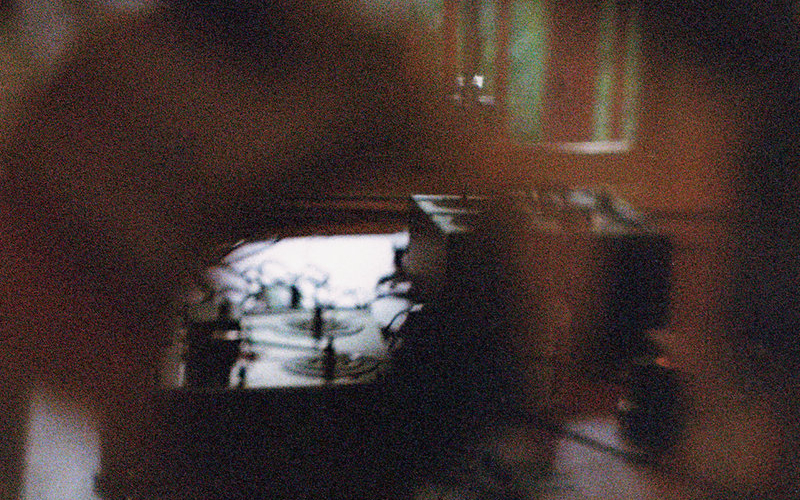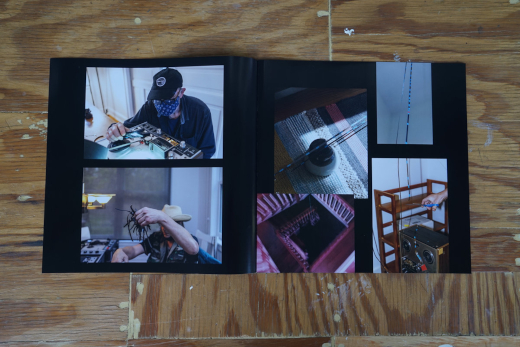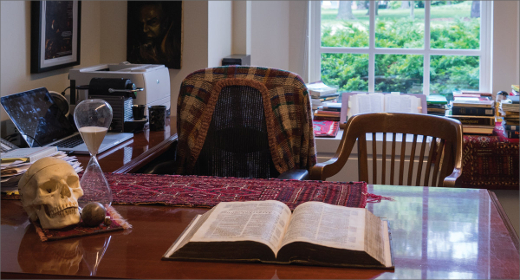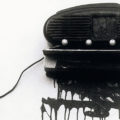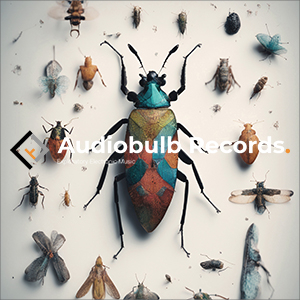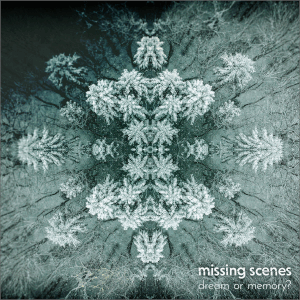Radio and musique concrète go together like bread and butter. As a medium, radio is the perfect platform for playing tape that has been spliced, diced, smothered, covered, layered, reordered, disordered, composed, decomposed and recomposed. That’s what has happened here with a new version of a mid-sixties John Cage composition, Rozart Mix.

A meeting of tape and radio
Radio and musique concrète go together like bread and butter. As a medium, radio is the perfect platform for playing tape that has been spliced, diced, smothered, covered, layered, reordered, disordered, composed, decomposed and recomposed. That’s what has happened here with a new version of a mid-sixties John Cage composition, Rozart Mix. This realization is a meeting of tape and radio, done and dusted by Midwest noise maker Aaron Dilloway, with a little help from his friends.
The original score for Rozart Mix is from 1965 and is made up of correspondence between John Cage and the sonic arts unionist Alvin Lucier. Cage wrote and dedicated the piece to Lucier in an effort to bring some new music to Brandeis University where had Lucier received his conventional compositional training, having done much work with the choirs there, before launching into a world of conceptual sonic poetry.
For the Rozart piece, the medium was tape, and those tapes could contain material of any length, up to even 45 feet of tape. What a huge loop! Other considerations in the score considered factors such as what to do if the tape broke: fix the tape or replace it with another. Seems easy enough, kind of like a guitarist putting on a new string after one breaks during a concert. The piece begins when the audience enters the performance space and ends when the last of them are all looped out and have left. The challenging part, beyond the challenge of a 45 foot tape loop, is that a minimum of 88 tape loops must be employed.
This new rendition all started with the Wave Farm where Aaron Dilloway had been an artist in residence for ten days in 2018. They must have liked having him there, because, he writes, “Back in the extremely strange year of 2020 I was approached by Wave Farm and John Cage Trust to stage a performance of this seldomly performed piece that Cage wrote for Alvin Lucier. The piece is comprised of 88 tape loops (one for each key of a piano), spliced together with multiple non-musical sounds played back on 12 reel to reel machines.”
Dilloway took them up on the offer and made the decision to revisit this John Cage work and compose it anew according to the original instructions. He was assisted in this project with help from noise head John Wiese (of Sissy Spacek and Bastard Noise), one man band Quintron, electronicist Twig Harper, sonic explorer and sound healer C. Lavender, and experimental stalwart Robert Turman.
Jump cut to the Wave Farm: The Wave Farm is this great place and organization in the New York’s Upper Hudson Valley. They are devoted, and I mean devoted, to the idea and genre of transmission arts, and are “driven by experimentation with the electromagnetic spectrum.” Their work cultivates creative practices around radio and support artists working with the electromagnetic spectrum through their WGXC radio station, online channels, and interdisciplinary outdoor installations. I got my first taste of what the Wave Farm was all about by listening to an episode about them on the Radio Survivor show, which I also highly recommend.
Splice in transmission arts ::
These are works defined as having some kind of involvement with the electromagnetic spectrum. There are a lot of works that could fall under the transmission art banner, because the spectrum is so ginormous, and we are just getting started as transmission artists. Radio is only just approaching its 130th birthday in a few more years, whereas painting, sculpture, poetry, song, they are as old as the hills. The electromagnetic spectrum encompasses the wave frequencies of radio, microwaves, infrared, visible light rays, ultraviolet, X-rays, and gamma rays. It will be interesting to imagine art using gamma rays, but I’d probably want to stay well clear of any installation using them, as they can be rather dangerous, still I’m all for exploring these potentials. The focus at the Wave Farm remains centered on the first, and safest, of these modes: radio. Championing radio in all its myriad forms, from the natural radio emitted by the earth, lightning, nearby planets and distant stars, to DIY radio sculptures, and off-center broadcasting, the Wave Farm gives space and frequency to creative use of the spectrum, allowing for the transmission and reception of radio art.
Just as art devoted to the electromagnetic spectrum holds a special place in my heart, so do noise musicians who happen to hail from my beloved Midwest: so I was happy to hear that Dilloway was at the center of this project. He had come to subcultural fame in the Michigan band Wolf Eyes during the late nineties and early oughts before they disbanded, but he’d already spent a lot of time rocking out and making noise in Michigan before that. Michigan, the home of the ONCE Festival where DIY electronic music was first put on the map.
Dilloway followed up his time in Wolf Eyes by a move to Nepal where he made recordings of their radio broadcasts, as well as field recordings and recording more of his own material. (He’s quite prolific.) Coming back to the states he settled in Ohio, where he collaborated with the group Emeralds who originally hailed from Cleveland. Thereafter Dilloway has continued his heavy musical workload with a number of his own releases. I can’t say for sure, but I would think, with the amount of razor cuts and splicing required to realize a new version of Rozart Mix, that this project might have been some of his most intensive work, at least with regards to sitting at the splicing table.
John Cage never specified exactly what must be on the tapes for Rozart Mix, and in keeping with the first performance in 1965 at the Rose Art Museum (ahhh, light bulb goes off, now the title makes more sense), the content did include field recordings and voices. Yet to make it new, and to celebrate ten years of Wave Farm being on the air with WGXC 90.7 FM, material was culled and clipped from the plethora of sounds presented over-the-air by the stations more than 100 programmers.
It would have been nice to be there at the live performance and see these twelve reel-to-reels positioned all around the John Cage Trust building. Meanwhile a live broadcast of the event went out over the airwaves on WGXC for two hours.
The artifact, the final record that resulted from all of this work is surprisingly short by comparison. The title track is just over fifteen minutes. It’s very nice, painstakingly assembled bit of audio collage and cut-up. But hearing a recording is always different than being in a space where you can walk around and here the loops playing at different levels in different places. Imagining how it would be to do that recalls to mind the Musik für ein Haus of Karlheinz Stockhausen, where players are positioned in different rooms, and people hear the music differently as they wonder about. Here it was the same with these tapes as people wondered about the building. That kind of spatialized sound I’m sure made it a tape loop day to remember.
Dilloway recalls the performance: “Six hours of 12 individually amplified reel to reel tape machines, placed around multiple floors of a house, playing 88 tape loops spliced together by 5 to 175 splices, created an overwhelming and joyous environment of cacophonous sound. The performance culminated with John Wiese touching a frog for the first time as the final sound croaked through the speakers. The frog contact was just one of many magical moments that occurred during the preparation and presentation of the piece.”
A previous version of Rozart Mix was released on Volume 1 of the massive Sub Rosa compilation, An Anthology of Noise and Electronic Music and it is a very different experience. Dilloway’s version has more of the grit and industrial tinged punch that comes from the noise music subculture. What we get on the new realization is almost twice as long. That means there is more time to wallow in the juxtapositions between harsh frequencies, subtle sounds, bloops and miscellaneous noise, as I wonder where it all came from. As a bonus it including individual tape tracks in mono and stereo so you can listen to them in isolation -and even stage your own multichannel playback of them if you get crafty with a couple of sound systems.
If you happen to find yourself in Oberlin, Ohio you could do a lot worse than stop by and visit Aaron at his brick-and-mortar Hanson Records shop, which also happens to be the name of the longtime label he has been running. Or try and get a tour of TIMARA, the Technology In Music And Related Arts department, part of Oberlin College’s famous conservatory.
Rozart Mix is available on Hanson. [Bandcamp]






